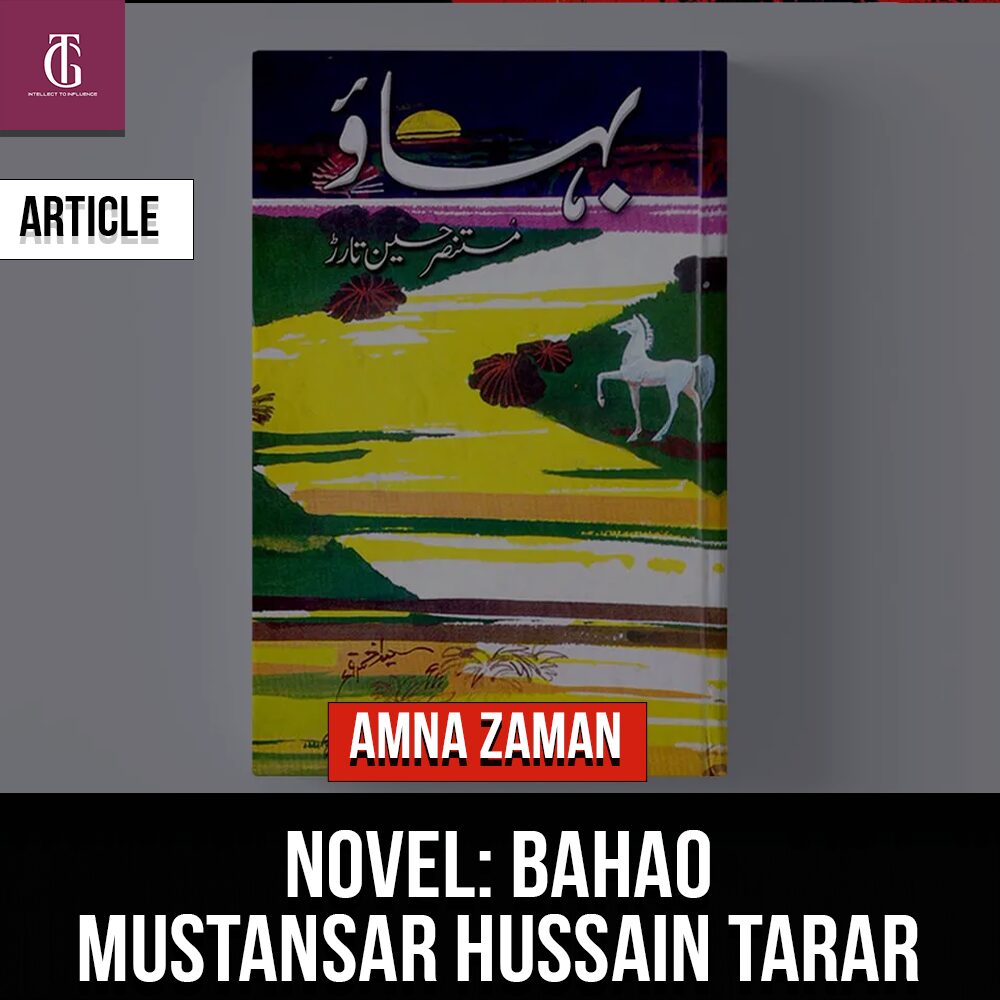“BAHAO”
Summary:
The author of this novel, Mustansar Hussain Tarar is a novelist, story writer, humorist and columnist. In this novel, he has beautifully discussed the ancient Sindh civilization (Indus Valley Civilization) and the facts about the culture and habits of the inhabitants. As the name depicts, this novel is about the flow of water, its influence on the lives of the people and role in the transfer of ancient civilizations. The author’s description of their culture, landscape and rituals reveals a close rhythmic bond of fertility and continuation with the soil, rain cycles and the annual floods in the river This is story of human endurance, survival and feelings expressed via many languages used by author.
Bahao (flow) begins with an astonishing scene of a migratory bird flying over a parched landscape for seeking water in terrible heat. He felt himself dying while looking down, the bird saw something that has the glint of water but ultimately collapses and dies on a mound of dead birds. The novel’s protagonist, the young woman Paroshni, laments its death. She gazed upon the shrinking lake surrounded by thickets of evergreens (rukh) still retaining some moisture from the rains. There were many trees including old Ficus religiosa (Pipals) and Tamarinds. Some distance away from Paroshni’s house lied the swampland and the small settlements close to the banks of Ghaghara river and various larger dwellings such as Mohenjo-daro which lie far away on the banks of river Sindhu. The whole life was depended on annual floods which was major source of irrigation around Ghaghara river which is also called Sarsoti.
This was a time of drought and great thirst. The author has beautifully described the passage of flow in the story of a flower; how it was taken off by pressurized flowing water and went through different struggles and at last reached the Ghagara river. One day, this flower touched the body of Paroshni when she went to the river side to check whether the annual flood is on its way or not. There she found a flower with its few dead petals and stem in the river, a sign of arrival of annual flood that raised their crops; their ultimate source of food. She knew that floods will arrive but she didn’t tell this to anyone.
On her way, she came across the three sons of Mati and also, she met Dhorwa, the only care taker of the cattle there. On her way back to her home, she met Sumro, the one who stayed in this township and carved the beads and seals. She also stayed for few minutes at Pakli’s place where she made various earth wares and decorate them with different structures. Paroshni was the one who wanted to spent her entire life at place of birth and hated the idea of leaving her birth place. She married Warchan who traveled to explore new places. He made his way to Mohenjo-daro and visualized the great city; its baths, craft centers, brick structures, narrow lanes and flat roofs, different from his township. Mohenjo-daro was on gradual decline, inhabited by Aryans over a millennium ago who have inhabited and overtaken vast areas of this land. They considered themselves superior racially and culturally and adhere closely to their religion of many deities.
When the time of return came, he travelled back in a boat containing other passengers from Mohanjo-daro, also a person named Dogra, who sought escape from the kiln where he was a brick-kiln worker. He followed Warchan and reached the evergreens’ jungles, wastelands of sand and ruined cities long abandoned. He told everything about himself to Warchan, the living style, way of earning the livelihood and the struggle of the people inside the who built this city.
One day, Kaagri, the one who caught birds, was running behind a bull and Paroshni was following her. Kaagri suddenly fell down and everyone passed without noticing her and she died there. When Paroshni fell down and the men on her. On seeing the bull, the men left but Poroshni was lying there seeing death in front of her eyes but Warchan saved her. They got married but she was unable to differentiate between Warchan and Sumro. She also gave birth to a child who was dead. This incident changed her life, the joy and inner happiness was taken away.
Some aspects of the religious beliefs and culture show elements of subsequent Hinduism. The spirit of the dead going beyond the river to the place where no-one goes, the ones who are near to death either retired to the thickets when their time came or being buried in pottery jars if they stayed on and the dogs of Yama came to fetch them, these all influenced their lives to larger extents.
The situation in this area got worse when their river starts dying. When the flow started abating and everything was drying and withering away, everyone left the township and migrated towards other areas where water and its resources were available for their survival except Paroshni who didn’t left her township and was living strenuously in the intense conditions.
The core objective of this novel is new targets and ideas are necessary for the survival of societies otherwise they will proceed towards the destruction of civilizations. Perhaps this is one of the reasons of civilization’s ruin. This book is considered one of the best writings of Mustansar Hussain Tarar. Intizar Hussain once called it “The Novel of The Century” and undoubtedly, this is one of the most spectacularly woven tales of the time.
Author is currently acquiring MPhil - International Relations at School of Politics & International Relations, Quaid-e-Azam university, Islamabad. Her Areas of Interest include; Non Traditional Security (NTS) Challenges, Escalating Regional as well as Global Insecurities, Diplomacy, Governance, Policy making and Foreign Policy.






